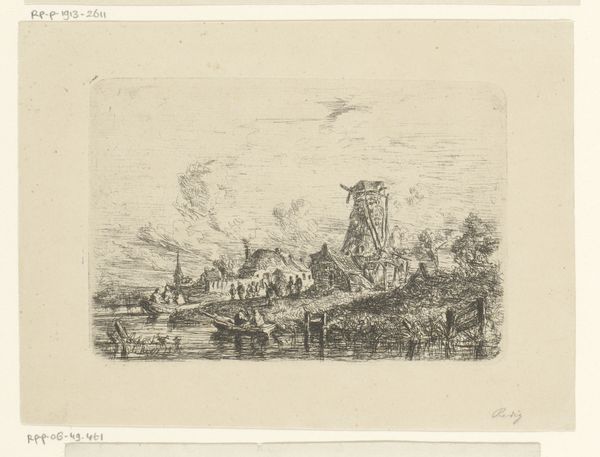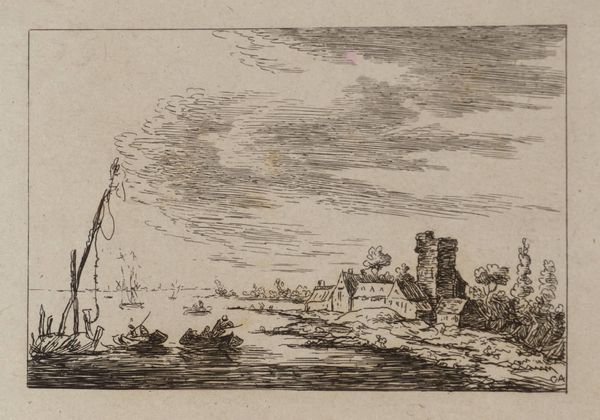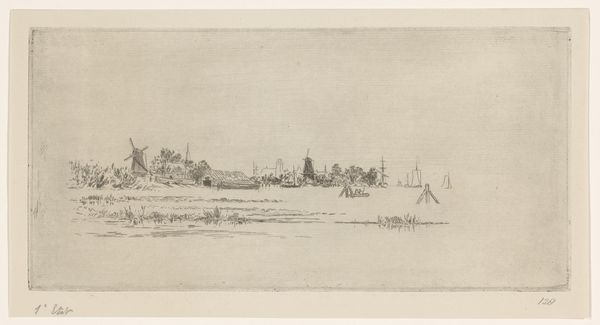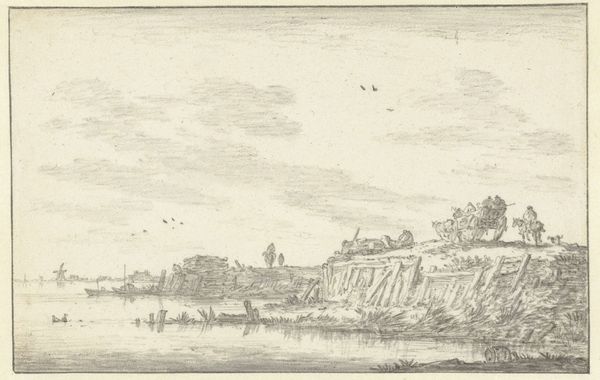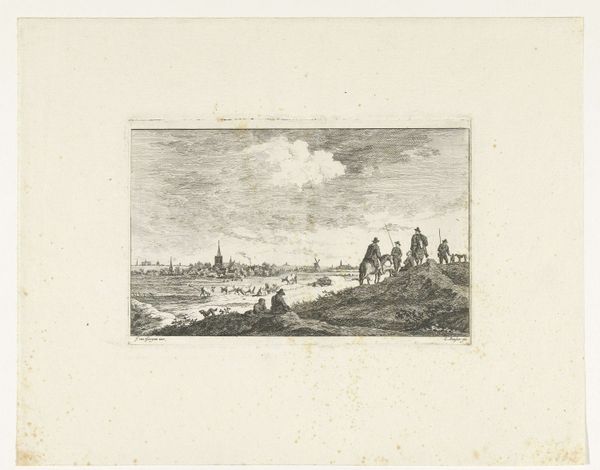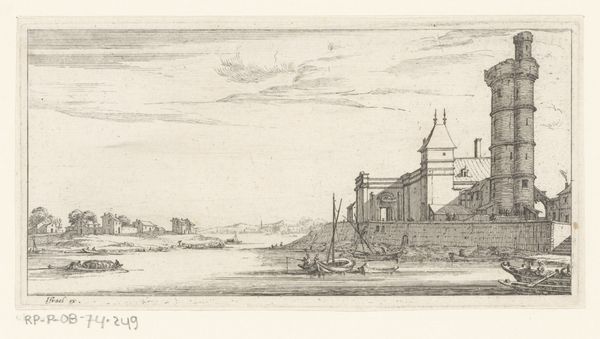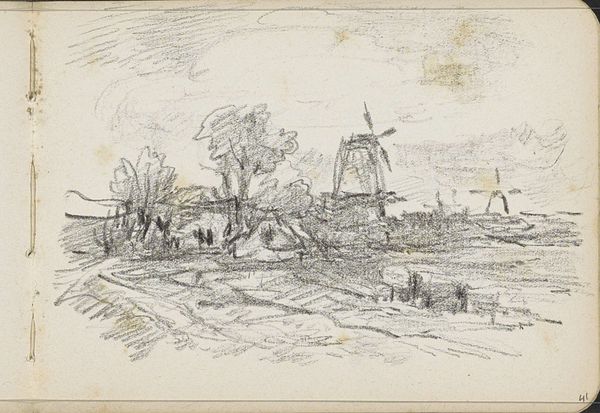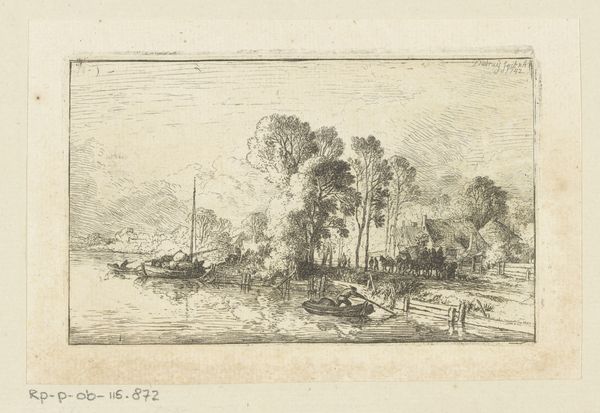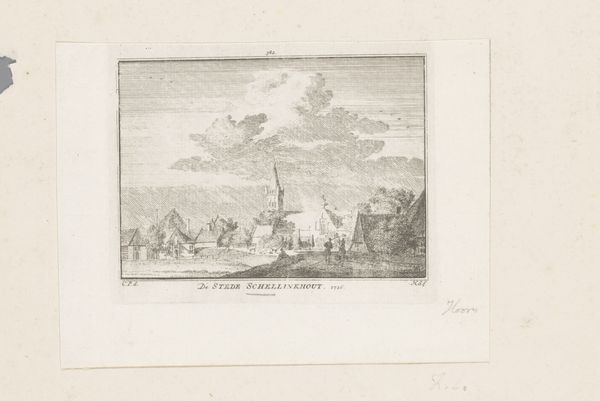
drawing, etching, ink
#
drawing
#
pen sketch
#
etching
#
landscape
#
ink
Dimensions: height 86 mm, width 125 mm
Copyright: Rijks Museum: Open Domain
Editor: So, this is "Gezicht op een dorp aan het water," a landscape by Laurent Herman Redig, created in 1855 using ink and etching. It’s quite a detailed scene despite the limited use of ink, almost dreamlike. What do you see when you look at it? Curator: I'm drawn to how this image interacts with ideas of progress and industry at the time. Notice the windmill. In 1855, industrialization was rapidly changing Dutch society. Representing a traditional windmill could be seen as a comment, perhaps even a subtle resistance, to the modernizing forces reshaping the landscape. How does the depiction of everyday life connect with this cultural context? Editor: I guess I hadn't considered it that way. I was just thinking about it as a simple landscape! But that's interesting... a little snapshot resisting broader cultural changes? Curator: Precisely. Etchings like these were widely accessible, and depicting serene scenes served to shape and reflect the national identity being consciously constructed in that era. Who was consuming such art, and what role did it play in constructing ideas about the Dutch landscape and its values? Editor: So it’s less a simple scene and more like… a political statement about the way of life and its reflection through art for those who valued it? Curator: Yes, art serves a very public role in expressing political identity. Also consider how museums displayed works like these. What kinds of narratives were created around them? Editor: Okay, I see. It is interesting to consider this as something more than a peaceful landscape—as part of a bigger historical and cultural dialogue. It also makes me wonder about the rise of photography around that time. Were etchings becoming almost… nostalgic? Curator: Excellent question. It really pushes us to think about the multiple layers of meaning within a single image, doesn’t it? Editor: Definitely. It adds depth beyond the initial impression, really fascinating.
Comments
No comments
Be the first to comment and join the conversation on the ultimate creative platform.
